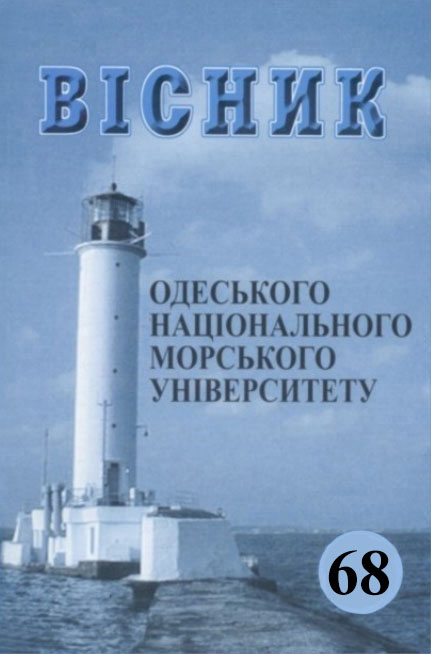Use of information and innovative technologies in the educational process in distance learning ONMU students
Main Article Content
Abstract
Nowadays, information and innovative technologies in education are successfully used all over the world. The key concept of distance learning is «interactivity », that is, the systematic interaction of the teacher and students each other. Today ONMU successfully uses the world's most popular distance-learning Moodle platform. The GeoGebra software package can be used as an integral part of the platform. This software, combining and linking geometric, algebraic, and tabular representation, allows you to create a visual solution to the problem. This approach allows you to use thi application for interactive practical training, which is very important for distance learning. The subject of this article is the use of the GeoGebra program during
interactive practical classes in the course «Hydrology and Hydrometry». During the study of the course «Hydrology and Hydrometry», it is necessary to teach students to perform engineering calculations of the parameters of water flows. Such calculations include the calculation of morphometric characteristics of the riverbed. The main morphometric and hydraulic characteristics of the profile of the river's water section are used in hydrological and hydraulic calculations, for example, extrapolation of rating curve Q = f(Н), etc. Each measuring work on the river section ends with the calculation of these characteristics. Implementation of the task of calculating the morphometric characteristics of the river bed and water discharge in a simplified way were using the tools of the GeoGebra program. The interaction of GeoGebra with the Moodle platform allows you to effectively use the means of information and innovation technologies when solving practical tasks. This lays a real foundation for the creation of a global system of distance education – one of the promising and effective systems of training specialists. Many teachers of Odesa National Maritime University are now fruitfully working on the development of this system.
Article Details
References
2. Rakuta V.M. Systema dynamichnoi matematyky GEOGEBRA yak innovatsiinyi zasib dlia vyvchennia matematyky. Informatsiini tekhnolohii I zasoby navchannia. 2012. №4 (30). URL: https://journal.iitta.gov.ua/index.php/itlt/article/view/892/687
3. Olivares, J. and Valero, E. Linear Homogenous Linear Differential Equations of Third and Fourth order through GeoGebra Software for Engineering Students. In: Proceedings of 2nd International Conference on Research in Teaching and Education, Budapest, 6-8 March, 2020, pp 7-19. DOI: https://www.doi.org/10.33422/2nd.rteconf.2020.03.34
4. Verhovod V.P. Izuchenie kinematicheskoy geometrii ploskih mehanizmov v sisteme GEOGEBRA / Teoriya Mehanizmov I Mashin. 2010. № 2. T. 10 URL: http://tmm.spbstu.ru/20/7_verkhovod_20.pdf.
5. Petra Shreiberova, Zuzana Moravkova. The use of geogebra in technical mathematics/VSB-Technical University of Ostrava, Faculty of Mechanical Engineering. DOI: 10.17973/MMSJ.2023_03_2022112
Adamchuk, M., Andreievska, H., & Fedorova, K. (2021). Praktyka zastosuvannia dynamichnoi heometrii GeoGebra v ZVO pry vykladanni dystsyplin budivelnoho napriamku. Visnyk Odeskoho natsionalnoho morskoho universytetu, (66), 60-73.URL: https://doi.org/10.47049/2226-1893-2021-3-60-73
7. Falcon, R.M. 3D Dynamical Geometry in Building Construction. In: J.L.G. Garcia ed. Proceedings of Technology and its Integration into Mathematics Education, Malaga, 6-10 July, 2010. Malaga: Universidad de Málaga. P. 1-18. URL:https://www.researchgate.net/publication/265972561_3D_Dynamical_Geometry_in_Building_Construction
8. Laryn S.V. Kompiuternaia anymatsyia v srede GeoGebra na urokakh matematyky: ucheb. Posobye. Rostov n/D: Lehyon, 2015. 192 s. URL: https://vboy.at.ua/news/kompjuternaja_animacija_v_srede_geogebra_na_urokakh_matematiki_uchebnoe_posobie_sergej_larin/2016-03-17-375
9. Hrybiuk, O.O.; Yunchyk, V. L. Osoblyvosti vykorystannia systemy GeoGebra v protsesi navchannia kursu «Matematychni osnovy informatyky». Matematyka. Informatsiini tekhnolohii. Osvita, 2017, 1.4: 34-49. URL: https://lib.iitta.gov.ua/707285/1/MITO_Yunchyk.pdf
